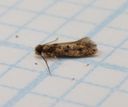Household Casebearer Moths
Phereoeca
Classification
- Phylum: Arthropoda
- Subphylum: Hexapoda
- Class: Insecta
- Order: Lepidoptera
- Superfamily: Tineoidea
- Family: Tineidae
- Subfamily: Tineinae
- Genus: Phereoeca
Pronunciation
How to pronounce Phereoeca: /ˌfɛr.iˈi.kə/
These audio files are automatically generated. While they are not always 100% accurate, they are a good starting point.
Images






Summary
Phereoeca uterella, also known as the plaster bagworm or household casebearer, is a species of moth belonging to the Tineidae family, primarily found in tropical climates and often associated with human habitation.
Physical Characteristics
Adult male wingspan 7-9 mm; female wingspan 10-13 mm. The forewings are gray with distinct dark spots and plain hindwings fringed with long gray hairs.
Identification Tips
Males are smaller and more slender with less distinct markings than females. Females lay eggs in sheltered places.
Habitat
Common in houses, particularly in tropical climates.
Distribution
Recorded from Brazil, Guyana, southern United States, Virgin Islands, Trinidad, and tentatively Tobago.
Diet
Mainly feeds on silk, especially spider webs, as well as silk from other arthropods, dander, fallen human hair, and wool.
Life Cycle
Larvae create protective cases from silk and camouflage them with soil, sand, and insect droppings. Pupation occurs within the case.
Reproduction
Females lay up to 200 tiny pale blue eggs.
Ecosystem Role
Potential household pest due to its feeding habits.
Economic Impact
Can be a household pest.
Evolution
Taxonomical confusion exists with related species.
Similar Taxa
- Phereoeca allutella
- Phoreoeca barysticta
Misconceptions
Some species have been misidentified or confused with one another.
Tags
- Lepidoptera
- Tineidae
- Phereoeca
- Household Casebearer Moths